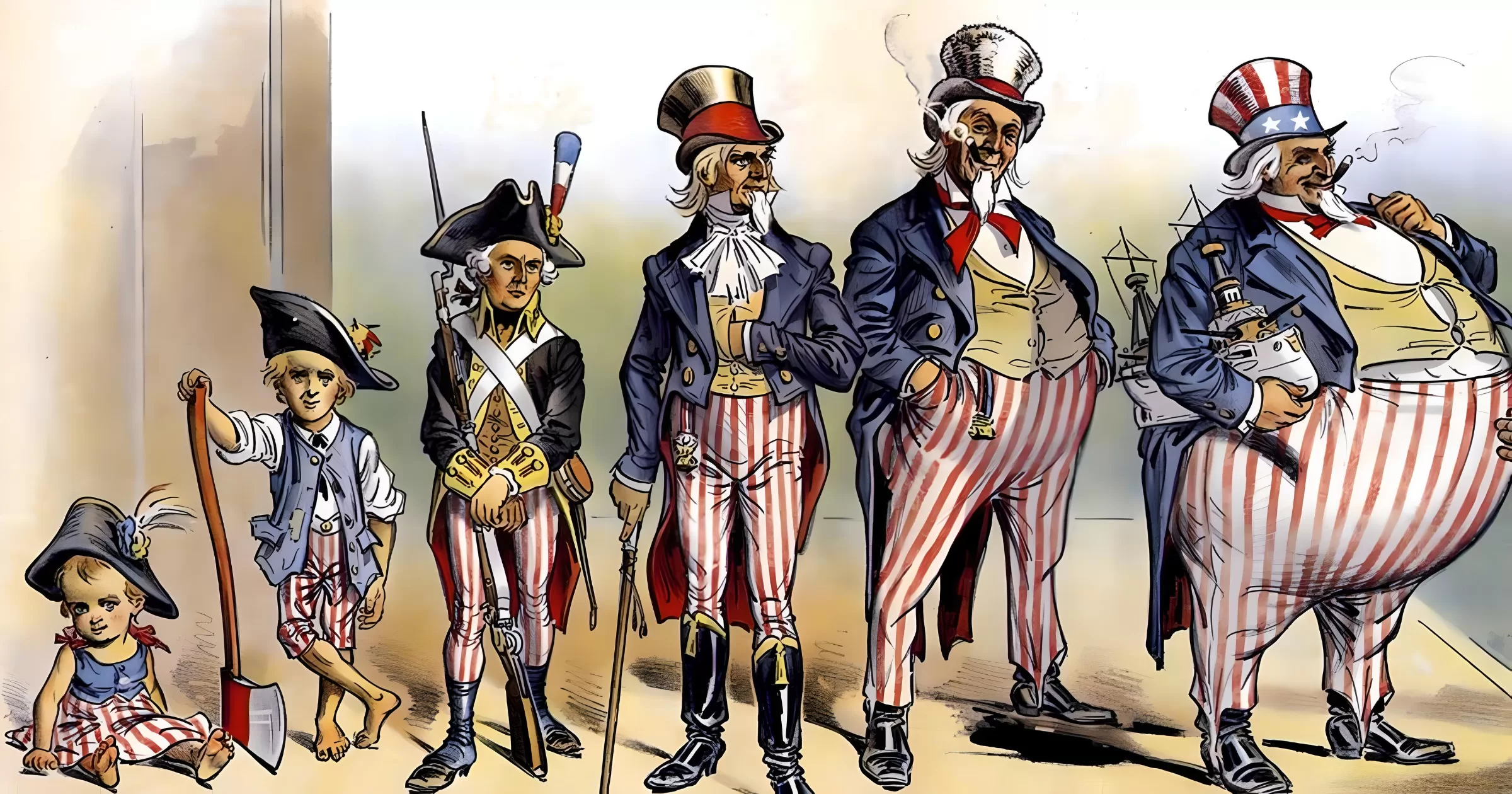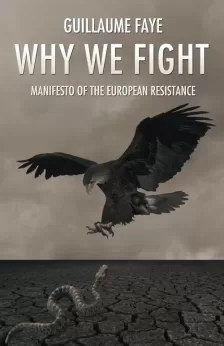When in 1492 Christopher Columbus first set foot on American soil, he was not the first European to do so. In 983 Viking explorer Eric the Red reached Greenland, where he established colonies. Somewhat later, a party of Vikings landed in Newfoundland and founded a settlement there. It is rumored that more or less in that same period, a Welsh seafarer by the name of Madoc sailed to the coast of Alabama. There are even some vague and unconfirmed reports that groups of Phoenicians, refugees from Carthage when it was razed by the Romans, made it to South America. In all probability, at least around 1450, Portuguese and Breton fishermen had found their way to the rich fishing grounds off the coast of Nova Scotia.
Therefore, if anything, Columbus is at most the symbolic discoverer of the New World, the new Atlantis. In view of justified doubts on the correctness of accepted chronology, however, one might wonder about the years when Columbus’ predecessors actually reached the New World. It just might be these are all compressed into a rather limited time span.
Be that as it may, one conclusion is justified: the establishment of regular contacts between the Old World and the New is one of the most significant events in world history. For one, the importance of a connection between the Eurasian-African land mass (eighty percent of the world’s land area) and the remaining twenty percent, most of it located in the Americas, can hardly be overstated.
Quite apart from the opportunities it offered for settlement, agriculture, cattle-farming and just about any other sort of activity, the discovery of the New World made the Europeans reflect on their own position in time and space.
Needless to say, the news about a newly discovered land that soon turned out to be a continent came both as a surprise and a shock to many Europeans. Within a few decades, the contours of the new continent became known and within another few decades much of it had been conquered by the Spanish and Portuguese and turned into colonies. The two main native empires, the Aztecs and the Incas, had become centers of the new Spanish colonial realm in the Americas.
In 1552 Spanish Augustinian Recollect friar Bartolomé de las Casas published a scathing criticism of the way in which the Spaniards treated the native inhabitants of the Caribbean: Brief Account of the Destruction of the Indies. French essayist Michel de Montaigne concluded that, indeed, in many ways American natives were like children, both in appearance and as regards intellectual development. They had soft skins and hardly any facial hair and their thoughts were ingenuous and naive. “It was an infant world,” he stated, “I am afraid we have hastened its decline and ruin by contaminating it, selling our opinions and technologies at too high a price” (Montaigne, Essais, Paris: Gallimard, 1950, III:6, p. 1018).
Being superior, the European had a moral duty to treat the Indians well and to help them develop and prosper. One may see in this attitude a precursor of the paternalistic conviction of the need to impart “development aid,” so dear to the “progressives” among us.
From the human world, it was but a small step to the animal world. French naturalist Georges Buffon (1701–1788) did exactly that and reached the conclusion that in the Americas, the mammals never quite attained the size, weight and volume of their counterparts in the Old World: the biggest representative of every species of mammal in the New World was smaller than in the Old. For instance, the biggest American predator, the puma, is much smaller than the tiger, the biggest Eurasian predator, and also smaller than the lion, the biggest African counterpart. Likewise, the biggest Old World herbivore, the elephant, is much bigger than the American tapir, the biggest native American plant-eater.
On the other hand, among the species considered to be lower in the hierarchy, American animals were consistently bigger than their Old-World counterparts. Among reptiles, for example, Buffon noted that the American boa constrictor was bigger than any similar snake in the Old World. The same with insects and spiders: all of them from the Americas bigger than their Old-World cousins.
Buffon concluded that America was a better habitat for insects and reptiles because it was more damp and moist and therefore must be geologically a younger continent, which made it intrinsically unhealthy for Europeans. America was younger, because, according to Buffon, the waters of the great flood that had once covered the earth had retroceded later from the New World than from the Old.
From Buffon, it was only a matter of time before a European would issue sweeping statements on the implications of the American environment for human habitation. Cornelius de Pauw (1739–1799), a Dutch-born German ecclesiastic and scholar employed at the Prussian court, had no qualms about being blunt on the matter, despite never having visited the New World. In his Recherches philosophiques sur les Américains (1768–1770) he stated that native Americans were inferior in all respects to Europeans. This coincided with the observations made by Jorge Juan and Antonio de Ulloa, two Spanish naval officers and scientists who traveled extensively in South America in the 1730s and 1740s. They asserted that Americans, even those born in the Americas of European parents, were inferior to Europeans in every respect: lazier and less intelligent.
The American Revolution and the independence of Saint-Domingue (Haiti) and the Spanish and Portuguese colonies (1810–1824) prompted German philosopher Hegel to refine previous judgments on the New World. Whereas the Old World, especially Europe, has history, he argued, the Americas only have geography. The only part of the New World that might eventually become significant and escape the grip of geography was the North, because it had been settled by Northern Europeans. North America had a future and could thus eventually have a past and enter history. In the Spanish- and Portuguese-speaking parts of the Americas, the grip of the Roman Catholic Church was so suffocating and the Spanish and Portuguese idiosyncracies so retarded that no future was possible, Hegel argued.
Hegel’s observations were very acute: most Europeans are still unable to look at the Americas outside of the diptych that he painted. They usually admire either the North (the US) or the South (Latin America), and automatically dislike or even despise the other. For instance, following Hegel’s precepts without realizing it, most European academic specialists on Latin America have traditionally been social scientists, economists, anthropologists, political scientists and the like. For them, Latin America apparently has little or no history.
In the US, there is a tendency to believe it stands outside of history: like a shining city on a hill. Tocqueville also noted that many in the US rejected the concept of history. More recently, Jean-Philippe Immarigeon has eloquently pointed out that a rejection of history is deeply ingrained in the US psyche (American Parano, 2006, L’imposture américaine, 2009). For instance, when in 2009, without batting an eye, President Obama asserted that the automobile was an “American invention.”
The adoption by the US of the neoliberal gospel as a new state religion after the Fall of the Berlin Wall also points to a fundamental rejection of history and tradition. If anything, it only increased the differences between the US and the Rest of the World.
These differences had become obvious to some Latin Americans as early as the late nineteenth century. In the course of the nineteenth and twentieth centuries, the accuracy of Hegel’s observations in this respect had become ever more apparent. Yet it took a shrewd observer to point this all out. This was José Enrique Rodó (1871–1917), a writer and philosopher from Uruguay. Like a number of his contemporaries, he had begun to doubt the validity of the generalized drive in Latin America to become prosperous by way of rationalization and industrial development. Rodó was convinced that Latin America would have a brilliant future, but that it would not be attained through the kind of utilitarianism preached by the US and applied at that time by a small group of devoted technocrats in Brazil and Mexico. The infatuation with utilitarianism based on science and democracy, so prevalent in his day and age, would only lead to mediocrity and intellectual and cultural poverty, Rodó argued in his essay “Ariel” (1900). Democracy, he said, repressed all esthetic, refined and noble sentiment and killed any respect for culture. Rodó pointed out that the US was the very embodiment of utilitarianism and said that Latin Americans ought to stop admiring the US for that. Borrowing from Shakespeare’s play The Tempest, Rodó identified the US as Caliban. The sinister urge to make ever more money was destroying everything that was valuable and human in humanity. Only by focusing on the spiritual, beauty, ethics and non-material entities could Latin America escape the growing power and influence of the US. Latin America was to be like Ariel, the synthesis of everything good, healthy and durable.
The age-old debate, in Europe especially, on the place of the New World in time and space, as analyzed brilliantly by Antonello Gerbi (La disputa del nuovo mondo, 1955, English translation published in 1962), has regained significance.
Now that the US empire has entered what may be its final crisis, the old dichotomy between the Northern and Southern parts of the New World has become relevant once more. The dichotomy is still there, but the borders have been redrawn. The US empire now includes the entire Anglosphere, NATO, Japan and South Korea. It is here that money is everything and that everything, even love and friendship, has a monetary value. Its fake values — such as Woke, sexual and gender deviancies. and “Safe Space” — are, if not insults, meaningless in a real world with its traditions and time-proven values.
That real world is sometimes called the “Global South” and somewhat exemplified by the BRICS countries and includes Africa, South America, Asia and perhaps countries such as Hungary. It is here that history and tradition, with everything this entails, are still respected and that the “Rules-Based International Order,” together with all its “values,” is rejected.
Whoever denies history is destined to exit from the stage without leaving any traces.








